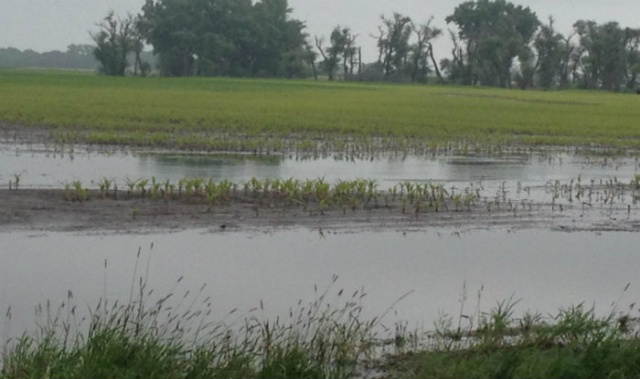Wet weather exposes wheat to mould and mycotoxins

Before the combines hit the fields this fall for harvest, farmers may want to keep a watchful eye on their crop quality. Preliminary testing over the summer months of the 2015 North America wheat crop, conducted by Alltech’s 37+ mycotoxin analysis, shows an average 3.2 mycotoxins per sample, with Deoxynivalenol (DON) the most predominant toxin.
Produced by Fusarium graminaerum mold, DON is part of the Type B Trichothecene family. At high risk levels, DON can have negative impacts on animal health and productivity, such as a reduction in milk production and weight gain, gut irritation and lower immune response. Critical factors for Fusarium mold growth include heavy rainfall, moderate temperatures, plant immaturity and crop stress or damage from insects, hail and wind.
High mycotoxin contamination
Summer rainfall levels through Missouri, Iowa, Illinois, Ohio, Michigan and Indiana presented a consistent pattern with areas of high mycotoxin contamination in wheat testing from 2,000 to 12,000 parts per billion (ppb).
“For the past 90 days, we have had above average rainfall. This caused late planting, with some acres not planted at all. This made it difficult to get in to spray or do post planting field work. Wet soil has also created a nitrogen loss situation,” said Dr Max Hawkins, nutritionist with Alltech’s Mycotoxin Management team. “The next month’s climate will tell us a lot about the severity of any mould and mycotoxin problems. Cool and extended wet weather would not be ideal.”
Also read the All About Feed whitepaper on Mycotoxins: Is there a silver bullet to eliminate mycotoxins?
Scout fields for any stalk or leaf mold issues
Hawkins advises farmers to scout fields for any stalk or leaf mould issues, as well as for any damage to plants from insects or weather conditions, such as wind or hail. Also look for any irregularity in the field. Excess rain can create ponds that can drown out or stunt crop growth and generate differences in soil types across a field.
“Crop differences displayed across a field go into the same storage bin or bunker and are mixed, contaminating the entire crop,” Hawkins said. “Once the crop is in the bin, we can get pockets with higher moisture levels, attributing to increased mould growth and spoilage, which in turn can produce mycotoxins and lower the nutrient value of the feed.”
Producers should take the necessary management steps upon harvest to help troubleshoot existing issues with contaminated feedstuffs:
- Use of a silage inoculant
- Proper packing and covering of grains
- Grain drying – dry to 14% moisture
- Use of a proper mycotoxin management programme
“The precursors for mould and mycotoxins are in place. Keep an eye on the weather leading up to harvest,” Hawkins said. “It’s still a long time until we have the 2015 crop in the bunker or bin, but we need to be proactive.”











